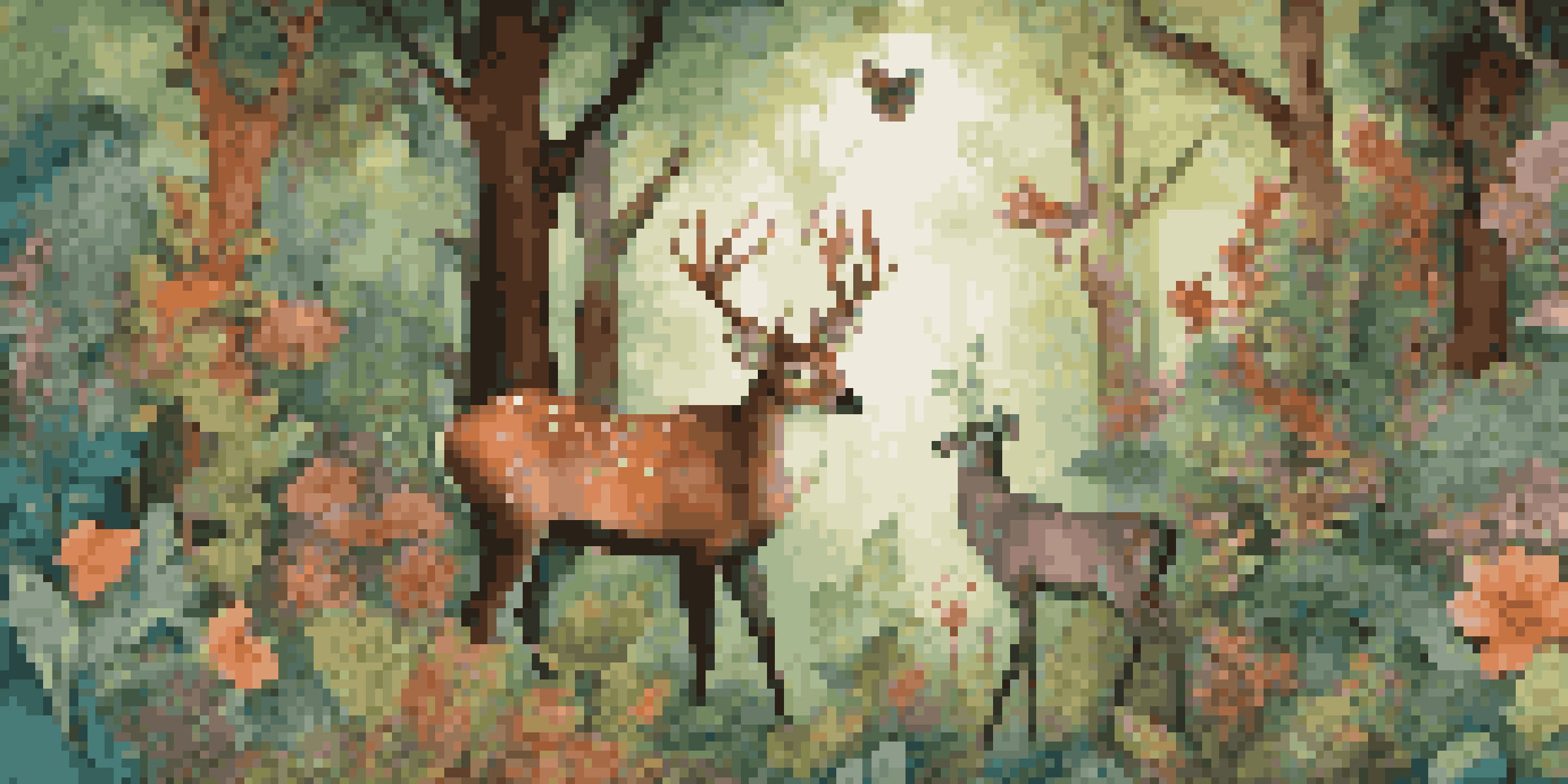Folklore's Influence on Contemporary Graphic Design Trends

Understanding Folklore and Its Cultural Significance
Folklore encompasses the traditional beliefs, customs, and stories passed down through generations. These narratives often reflect the values and experiences of a culture, providing a rich tapestry of inspiration for artists. In graphic design, folklore serves as an evocative source, where designers can draw upon symbols, motifs, and storytelling techniques that resonate with audiences. By tapping into these deep-rooted cultural elements, designers create works that are not only visually appealing but also rich in meaning.
The Return of Hand-Drawn Illustrations
In recent years, there has been a noticeable shift towards hand-drawn illustrations in graphic design, a trend that echoes the artisanal nature of traditional folklore. These illustrations often carry a sense of warmth and authenticity, reminiscent of the handcrafted storytelling found in folk art. Designers are integrating these organic elements into branding and marketing materials, making their work feel more personal and relatable. This approach creates an emotional connection with audiences, inviting them into a world that feels familiar yet distinct.
Folklore Enriches Graphic Design
Designers draw inspiration from folklore to create visually appealing works that resonate with cultural values and experiences.
Bold Colors and Patterns Inspired by Folklore
Folkloric designs are often characterized by vibrant colors and intricate patterns that tell stories and convey emotions. Contemporary graphic designers are embracing these elements, using bold color palettes to evoke feelings and create striking visuals. Patterns inspired by traditional textiles and crafts can be seen in various mediums, from packaging design to digital graphics. This infusion of folklore not only enhances aesthetic appeal but also enriches the narrative behind the designs, making them more engaging.
Symbolism: Bridging the Past and Present
Symbols play a significant role in folklore, often carrying deep meanings that transcend time and culture. Modern graphic designers are effectively utilizing these symbols to create designs that resonate on multiple levels. For instance, incorporating motifs like animals or nature can evoke a sense of nostalgia while also appealing to contemporary sensibilities. This blend of old and new allows designers to connect with diverse audiences, ensuring their work remains relevant and impactful.
Hand-Drawn Illustrations Resurge
The trend towards hand-drawn illustrations in design evokes warmth and authenticity, creating a personal connection with audiences.
Storytelling Through Visual Design
Storytelling is at the heart of folklore, and this narrative element is increasingly being woven into graphic design. Designers are crafting visuals that not only convey information but also tell a story, drawing inspiration from traditional tales and myths. This approach transforms designs into experiences, encouraging viewers to engage more deeply with the content. By creating a narrative thread, designers can guide audiences through a visual journey that captivates their imagination.
Nature and the Environment in Folkloric Design
Many folklore traditions celebrate the beauty and significance of nature, and this theme is increasingly reflected in contemporary graphic design. Designers are incorporating natural elements into their work, using illustrations of flora and fauna to evoke a sense of harmony with the environment. This trend not only pays homage to traditional stories but also addresses modern concerns about sustainability and ecological awareness. By connecting folklore with environmental themes, designers create work that is both visually stunning and socially relevant.
Cultural Identity Shapes Design
As globalization impacts design, artists use folklore to express their unique cultural identities, enriching the conversation around diversity and authenticity.
Cultural Identity and Modern Graphic Design
As globalization continues to influence the design landscape, there is a renewed focus on cultural identity, with folklore serving as a powerful anchor. Designers are exploring their cultural heritage, using folklore as a means to express their unique identities in a global context. This exploration results in designs that celebrate diversity and authenticity, resonating with audiences seeking connection and representation. By honoring folklore, designers not only preserve cultural narratives but also enrich the contemporary design conversation.
The Future of Graphic Design and Folklore
Looking ahead, the relationship between folklore and graphic design is poised to grow even stronger. As designers continue to seek inspiration from diverse cultural narratives, we can expect to see innovative interpretations of traditional elements. This evolving dialogue will likely lead to fresh trends that challenge conventions and redefine visual storytelling. By embracing folklore, graphic designers can create work that not only captivates but also honors the rich tapestry of human experience.